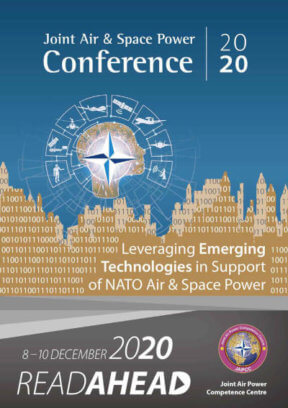Technical Developments
Emerging technologies offer wide opportunities for Space systems and their services. The ability to build spacecraft smaller and lighter due to technical developments have made Space activities more attractive to the commercial market. In addition launch costs for satellites have decreased considerably, while the number of potential launch providers has increased significantly. In the past even the commercial launch business was more or less ‘state-driven,’ whereas today it has been completely opened to the commercial market. Companies like SpaceX® (USA), Rocket Lab® (USA/NZL), Virgin-Orbit® (USA), iSpace® (CHN) or Galactic Energy® (CHN) are gaining more and more customers, and offer Space launch services in nearly all orbits. States are still in charge for the licensing and Space security during the launch phase but mainly because the commercial companies still rely on state-owned launch infrastructure. This may change in the future when more and more commercial companies operate their own launch infrastructure and operate out of more countries worldwide.
Besides the decreased launch costs, paired with the chance to build smaller spacecraft, a new threat assessment or philosophy for satellite constellation operations has been developed, especially by the commercial market. In the past, and still today for military or security satellites, the systems were built on high-security standards that include technical multilevel redundancies and the use of expensive Space environment-hardened equipment which all together raised the manufacturing costs tremendously. To get the best value, the longest possible lifetimes of the deployed systems were intended. This caused years-long design and manufacturing periods for a satellite, which often caused the satellite to be either technically ‘obsolete’ before it was launched or after a couple of years of operating. Today’s emerging technological development allows building smaller and less robust and resilient spacecraft, because they will intentionally get replaced after only a few years of use. These changes in the development philosophy allow significantly shorter development and production times, not only for the satellite itself but also for the components which could be mostly commercial-off-the-shelf (COTS).
An additional feature that belongs to emerging technology is artificial intelligence. The current and foreseeable technical developments offer a high level of autonomy of individual satellites or even whole constellations, which reduces access points for potential cyber incidents and increases the overall resiliency of such systems. These developments, taken together, make it especially appealing cost-wise for commercial entities to invest in the Space sector.
Additionally, due to the stated limiting factors, the idea of building large constellations of small and inexpensive spacecraft to ensure a persistent service is also of interest for the commercial market. While building, for example, a SATCOM service based in Geostationary Earth Orbit (GEO), only three satellites for a near-global coverage are required. Ensuring the same coverage with a constellation in LEO requires several hundred satellites. Smaller satellites that can be used in LEO decreased launch costs especially compared to GEO, due to emerging technologies which made this commercially affordable.
To remain current about the technically possible services, even when it is not anticipated to use them for military purposes, NATO and/or its member nations should monitor the commercial market to understand the opportunities and threats caused by emerging capabilities. NATO should additionally encourage the member nations to influence commercial companies registered in their countries, through licensing or project definition processes, to make services (in cases of conflict) unusable for potential opponents outside of NATO. This process has to be initiated early to ensure these kinds of regulations are accepted in the overall project definition as well as in the contract of potential customers. The major threat that has to be avoided is that potential opponents of NATO have the chance to use the service or data. Therefore companies registered in western countries also have to be in contact with the security entitles to identify ‘undesirable customers’.
Space Services Currently of Interest in this Context: Satellite Communication (SATCOM)
SATCOM constellations in LEO offer military relevant advantages that have to be considered. LEO applications offer a more robust coverage compared to GEO outside the regime between 70⁰ North and 70⁰ South. Outside of this geographical regime the visibility of GEO satellites is limited due to very low antenna angles of ground stations to the horizon. Especially in geographical challenging areas like mountainous regions or urban areas, signals of GEO applications are often shaded. Using constellations in LEO offers shortened transmission distances, which allows for either lower required transmission power or a higher data throughput compared to GEO constellations. For SATCOM applications in LEO, due to the expected large number of users and the assessed high amount of data throughput, mega-constellations seem to be more efficient. Lower transmission power also allows for usually smaller user terminals; there is a chance that future SATCOM terminals will be the size of large cell-phones or even smaller. It is assessed these smaller terminals will offer comparable or better performance than today’s systems, which are mostly vehicle-borne. Solutions to either cross-link users inside the constellation or the continuous login to passing satellites ensure a constant signal transmission. The overall goal is that the user recognizes no difference compared to GSM applications. Commercial providers that invest in mega-constellations often advertise with slogans that allow or promise internet anytime and everywhere. Talking about resiliency and security, LEO constellations are more difficult to jam in the up-link, because the number of satellites give a certain amount of system redundancy. All together mega-constellations offer opportunities, but also risks. To make the SATCOM services of LEO constellations usable for NATO a number of existing ground infrastructure will have to be upgraded.
Actually, there are different commercial companies which invest in the development of SATCOM applications based on mega-constellations in LEO. Some of them are already in the building phase. The systems, according to their development, licensing and deployment status, which will most likely be first in operation are:
OneWeb® (GBR) – An GBR registered company which planes a constellation that will consist of 648 small satellites, each with a mass of around 150 kg. It will be deployed in LEO with an altitude of 1,200 km. The first prototype satellites were launched in February 2019, the deployment phase of the regular satellites has started on February 6th 2020, deploying the first 34 ones. For 2020 at least two but up to ten more launches have been planned, carrying 34 satellites each, while IOC for the service was planned for late 2021. In late March 2020, after a second successful launch of 34 more satellites, the company went in financial troubles and declared bankruptcy. It is highly probable that the system can and will be deployed after new investors are identified.
Starlink® (USA) – Is a sub-company of SpaceX. The planned constellation will consist of up to 12,000 small satellites each with a mass of around 230 kg. They will be deployed in three orbital regimes in LEO. The first 1,500 satellites are planned in an orbit of 550 km. The first prototype satellite was launched in May 2019, the deployment phase has started in December 2019 deploying the first 60 satellites. For 2020 there are up to 20 launches planed, carrying 60 satellites each. Up to now there are 240 satellites deployed, with IOC optimistically planned for late 2020; which requires at least seven more successful launches in 2020.
On the military side the US Defense Advanced Research Agency (DARPA) is currently developing with Blackjack® a demonstration SATCOM constellation that offers secured communication for military needs, which is planned to be IOC in 2022. DARPA is trying to decrease the development and production cost by monitoring the market and using already developed components of the commercial mega-constellation’s mass production process such as the satellite bus for example. Only the needed components for the secured military applications are specifically bespoke developed. This constellation should then interact with a commercial mega-constellation to ensure resiliency by redundancy. This kind of combination between a secured military-operated constellation which then interacts with a commercial constellation seems to be the most efficient way to make these services usable for military and security users.
Intelligence, Surveillance, and Reconnaissance (ISR)
Mega-constellations or large constellations offer a high revisit rate for ISR applications. In particular, change detection or nearly continuous monitoring are potential military usable services. Large constellations of small satellites are limited in ground resolution. The small and compact design of the satellites limits the optics or Synthetic Aperture Radar (SAR) sensors either in size or in transmission power. However, a large number of Space-based assets are harder to counter whether with dazzling or jamming compared to a lower number of higher capable systems which increases the resiliency of the whole architecture. Applications that offer change detection or nearly continuous monitoring services have become more interesting for the commercial market because these data can be merged with navigation data that provide the user always actual images of the environment. On the other hand, services like this increase risk to NATO operations when potential opponents are able to access the data. It has to be ensured that data, provided by commercial companies registered in NATO member nations or nations that have close cooperation with NATO, do not offer military relevant and usable data to potential opponents, especially when this data covers areas of NATO operations.
The US-registered company Planet® already operates one mega-constellation that consists of 120+ small satellites which are the size of a shoebox. This constellation offers nearly continuous monitoring data in medium1 resolution. The high revisit rate allows change detection and is advertised by the company to ‘mitigate risk with persistent monitoring’. The company also operates a constellation of small high-resolution satellites that interacts with the mega-constellation.
The US-registered company Hawkeye360® is the first commercial provider which offers Signal Intelligence (SIGINT) service. The constellation is currently in the deployment phase and will consist, as of now, of 18 satellites. Besides the main purpose to detect interferences and support frequency optimization, the data can also be used to locate emitters. Outside the NATO member nations there is currently no project in the final stage of the development, but it will soon be expected when the commercial constellations gain success.
Overall Assessment
The commercial market of Space services is continually emerging due to smaller but more capable technology that can be used in satellites and due to an increased market for commercial Space launch providers. The services based on mega-constellations in SATCOM and ISR already exist, currently in the deployment phase or under development. These offer advantages and threats to NATO, and all military operations. A constant monitoring of the commercial market, identifying usable services and adapting them, as well as the need to find means to ensure that these services are not usable for potential opponents will be a challenge for military and security services in the future.









